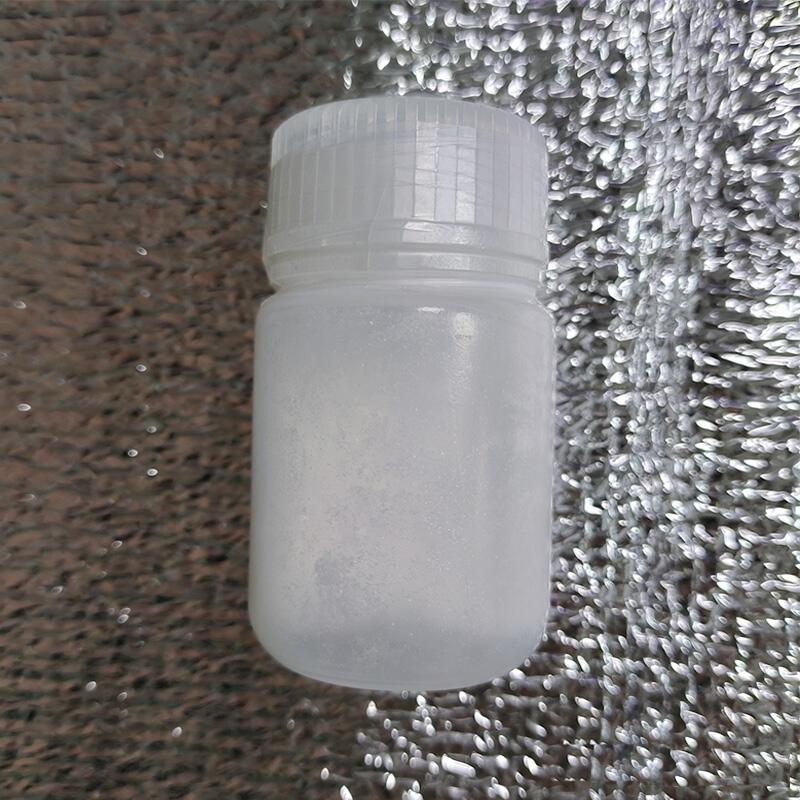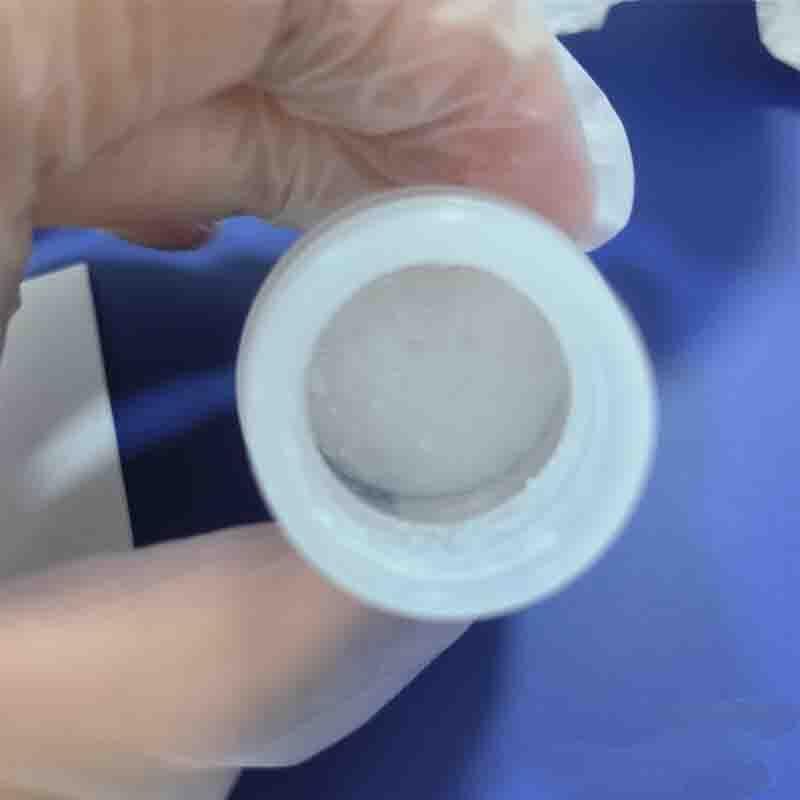-
Categories
-
Pharmaceutical Intermediates
-
Active Pharmaceutical Ingredients
-
Food Additives
- Industrial Coatings
- Agrochemicals
- Dyes and Pigments
- Surfactant
- Flavors and Fragrances
- Chemical Reagents
- Catalyst and Auxiliary
- Natural Products
- Inorganic Chemistry
-
Organic Chemistry
-
Biochemical Engineering
- Analytical Chemistry
-
Cosmetic Ingredient
- Water Treatment Chemical
-
Pharmaceutical Intermediates
Promotion
ECHEMI Mall
Wholesale
Weekly Price
Exhibition
News
-
Trade Service
How long will we have to go from the flurry to the new crown and permanently eliminate the disease caused by the virus? Maybe we can't give 100 percent the right answer to this question, and so far not all viral diseases have special drugs, but even so, we're not helpless.
old proverb cloud: dead sheep make up for prison, it is better to plan ahead! With the deepening of medical inquiry, "vaccination" has undoubtedly become a very powerful prevention and treatment program! As a biological agent, vaccines can provide actively obtained immunity to people infected with specific infectious diseases.
vaccines usually contain biological agents derived from pathogenic microorganisms, or similar agents synthesized, usually made from weakened or killed microorganisms or one of their surface proteins.
stimulates the body's immune system, identifies it as a threat, destroys it, and further identifies and destroys any microorganisms it may encounter in the future associated with the substance.
vaccine can be preventive (preventing or mitigating the effects of natural or "wild" pathogen infections) or therapeutic (fighting diseases that have already occurred, such as cancer).
PART.01 vaccine development history may not know much about the "little flower virus" now, but in ancient times when medical technology was underdeveloped, it was described by the public as a "faithful accomplice of death" with a high infectious and high fatality rate.
it was defeated by empirical therapy.
"The Acne Conclusion" was written by Zhu Chunof the Qing Dynasty and published in Kangxi 52 (1713).
The bookmaker's "Living Young Heart Law", combined with personal experience, put forward: acne rash originated from "fetal poison", due to four-hour positive gas disorder, two gas cross-attack and hair; Volume
deals with the causes, pathology, pathology and treatment of acne rash, volume II on the collapse and inverting of acne, both miscellaneous and postpox dysentery, palpations, roll three vaccination methods and the history and methods of vaccination prevention with acne, volume IV on measles diagnosis and treatment, cord treatment and the occurrence of anti-umbilical wind.
Guangxu nine years (1883) Xu Anlan deleted the book, named "the acne rash conclusion" and published.
with the further development of medicine until the end of the 17th century, doctors' practice was to apply pus from small flower patients' skin wounds to scratches on healthy people.
this approach can be very good prevention of small-flower disease, but still about 3% of people will die after vaccination, that is, there are still some shortcomings in safety.
vaccine was introduced by British doctor Edward Jenner in 1796.
Jenner collected pus from the hand of a milking maid suffering from cowpox and injected it into the arm of an 8-year-old boy, James Phipps, who made a miracous recovery after a few days of fever.
six weeks later, he tested the boy with the flute virus and found no symptoms.
Jenner expanded his research and said in a 1798 report that the vaccine was safe in both children and adults - the bovine pox virus gave humans protection against smallpox.
following Jenner's work, Louis Pasteur introduced a second-generation vaccine in the 1880s, which developed vaccines for cholera and anthrax and adopted a national vaccination policy.
20th century, several successful vaccines emerged, including for diseases such as diphtheria, measles, mumps and rubella.
as vaccines became more common, many people began to think they were "invincible."
, vaccines still do not treat many important diseases, including herpes simplex, malaria, gonorrhea and AIDS.
the key to the PART.02 vaccine type is to inject antigens into the body without making people sick.
have developed several ways to do this, and each method can produce different types of vaccines.
01 detoxifying live vaccines introduce weaker, asymptomatic forms of viruses or bacteria into the body for these types of vaccines.
the vaccine, pathogens do not spread and cause disease, but the immune system will still learn to recognize its antigens and know how to "fight" in the future.
: These vaccines provide an excellent simulated environment for the immune system by introducing actual living pathogens into the body.
therefore, a live vaccine can produce lifelong immunity in just one or two doses.
disadvantage: Because live vaccines contain live pathogens, they are not given to people with weakened immune systems, such as those undergoing chemotherapy or HIV treatment, because pathogens can become stronger and cause disease.
, these vaccines must always be refrigerated to prevent the death of weakly toxic pathogens.
02 Specific vaccine measles; mumps; rubella (MMR combined vaccine) chickenpox (chickenpox); influenza (nasal spray); rotovirus 03 inactivated vaccine For these vaccines, a specific virus or bacteria is killed by heat or chemicals, and its dead cells are introduced into the body.
even if the pathogen is dead, the immune system can learn from its antigens how to fight its living form in the future.
: These vaccines can freeze and dry to make them easy to preserve because, like live detox vaccines, there is no risk of killing pathogens.
they are also safer and there is no risk of disease from virus or bacterial mutations.
: because a virus or bacteria is dead, it can't accurately simulate real objects like a live detox virus.
, it often takes several doses and "boosts" to train the body to defend itself.
04 sub-base/conjugate vaccine for certain diseases, scientists can isolate a specific protein or carbohydrate from the pathogen and inject it into the body to train the immune system to respond without causing the disease.
: With these vaccines, the chance of adverse reactions is much lower because only some or all of the original pathogens are injected into the body.
: The best antigens in pathogens are used to train the immune system and then separate them.
only certain vaccines can be produced.
05 toxin vaccine certain bacterial diseases can damage the body by secreting harmful chemicals or toxins.
for these bacteria, scientists can use a mixture of formaldehyde and water to "inactivate" certain toxins.
these dead toxins are safely injected into the body.
immune system can learn from dead toxins to fight off toxins that appear in life.
06 combines vaccines with certain bacteria, such as Hebrew disease, with an outer coating of sugar molecules that disguise their antigens and deceive the young immune system.
to solve this problem, scientists could combine an antigen from another identifiable pathogen with a icing disguised bacteria.
result, the body's immune system learns to recognize that sugary disguises are inherently harmful and attack them as soon as they enter the body.
analysis and prospects of the PART.03COVID-19 vaccine to understand how the COVID-19 vaccine works, we must first understand how our bodies fight viral diseases.
when bacteria such as the COVID-19 virus invade our bodies, they attack the human system and reproduce.
blood contains red blood cells that carry oxygen to tissues and organs, as well as white or immune cells that fight infection.
different types of white blood cells resist infection in different ways: macrophages are white blood cells that devour and digest bacteria and dead or dying cells.
macrophages left behind invasive bacterial parts called antigens.
the body identifies antigens as dangerous antigens and stimulates antibodies to attack antigens; B lymphocytes are defensive white blood cells.
produce antibodies that attack viral fragments left over from macrophages; T lymphocytes are another defensive type of white blood cell.
attack infected cells in the body.
COVID-19 vaccine helps our bodies develop immunity to the virus that causes COVID-19.
different types of vaccines are protected in different ways, but in all types of vaccines, the body leaves behind "memory" of T lymphocytes and B lymphocytes, which remember how to "fight" the virus in the future.
, it usually takes weeks for the body to produce T lymphocytes and B lymphocytes.
, because the vaccine does not have enough time to provide protection, it is possible to contract the virus that causes COVID-19 before or after vaccination and then become ill.
sometimes, after vaccination, the process of strengthening immunity can cause symptoms, such as fever.
these symptoms are normal, indicating that the body is building up immunity.
currently, three major types of COVID-19 vaccines are or are about to be conducted in large-scale (Phase 3) clinical trials.
following is a description of how each vaccine motivates our bodies to identify and protect us from the virus that causes COVID-19.
mRNA vaccine contains a viral substance that causes COVID-19, which provides guidance to our cells on how to make harmless proteins specific to the virus.
when our cells replicate proteins, they destroy the genetic material of the vaccine.
our bodies recognize that the protein should not exist and produce T lymphocytes and B lymphocytes, which remember how to fight the virus that causes COVID-19 if we are infected in the future.
vaccine includes harmless fragments (proteins) of the virus that cause COVID-19, rather than the entire bacteria.
, our immune system recognizes that proteins do not belong to the human body and begins to make T lymphocytes and antibodies.
if infected in the future, memory cells will recognize and fight the virus.
vector vaccine contains a weak live virus (unlike the virus that causes COVID-19), which has the genetic material (called a viral vector) that causes coVID-19 to be inserted.
once the virus vector enters our cells, genetic material sends instructions to the cells to make a protein that is unique to the virus that causes COVID-19.
follow these instructions, our cells copy proteins.
this encourages our bodies to build T lymphocytes and B lymphocytes that remember how to fight the virus if we are infected in the future.
with the increasing number of infections at home and abroad, the new coronavirus has become a serious threat to global security.
In the near future, COVID-19 vaccination will become a global trend, I believe that safer and more effective vaccines will also be born, let us look forward to the end of the new crown of this day as soon as possible! References: 1. Siegrist C A. Vaccine immunology[J]. Vaccines, 2008, 5(1): 17-36.2. Dror A A, Eisenbach N, Taiber S, et al. Vaccine hesitancy: the next challenge in the fight against COVID-19[J]. European journal of epidemiology, 2020, 35(8): 775-779.3. van Riel D, de Wit E. Next-generation vaccine platforms for COVID-19[J]. Nature materials, 2020, 19(8): 810-812.







